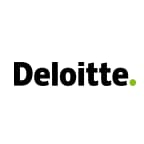To explain the Architecture, Use case and possible future use case of the blockchain and the blockchain itself one has to first trace it’s history and explain some related terminologies the most common being distributed ledger, a ledger as we know is a record of transactions so the most logical definition of a distributed ledger would be a distributed record of transactions that is replicated in every Node in a system , saying the blockchain is a distributed ledger is a very simple way to understand blockchain but here’s a better way to understand a Blockchain see it as an immutable ledger that process transactions and track assets in a network assets could be tangible (cars, houses, products) or intangible( Intellectual property, patent, copy rights, certificates.) there’s more to the technology it’s immutability & security is what commands trust the components assembled to build the blockchain includes Nodes which are computers connected to the system, Consensus Protocol rules that govern operations in a blockchain, Block an adopted data structure to store sets of transactions that is distributed to all Nodes in the Network a Block contain data (depending on the blockchain purpose) the hash of the current and previous block, Chain a chronological sequence that links blocks in a networks, Miners Nodes that perform the block verification process to add to a blockchain structure, Hash a cryptographic algorithm that detects any change made in a block, as we get familiar with the technology it would be appropriate to know its history in 1991 two Researcher at Bellcore Stuart Haber and W. Scott Stornetta released a paper HOW TO TIME STAMP A DIGITAL DOCUMENT in which they proposed two solutions Hash and signature (signature schemes) and later released a second paper in march 1992 IMPROVING THE EFFICIENCY AND RELIABILITY OF DIGITAL TIME STAMPING with Dave Bayer of Barnard college Colombia University where they proposed adopting Trees system (a system that was patented by Ralph Markle in 1979) to time stamp digital document but also proposed adopting linear linking systems and the Random witness method in a complementary manner to improve the efficiency and reliability of a new system they proposed Client A use linear linking to timestamp his own records then send its summary value for a giving time period to a service that constructs linked trees at a regular interval the root of each tree would then be certified as a widely publicized event using the random-witness protocol amongst the participants, it is no surprise that this two papers where cited in the Bitcoin whitepaper, further down the timeline Hal Finney’s RPOW (REUSABLE PROOF OF WORK) is identical to today’s blockchain the system incorporates many technology that are present in the blockchain setup the major difference being it was hosted on a centralized RPOW server or cluster of server’s which ran IBM 4758 secure cryptographic Coprocessor, the sheared idea and principle in this systems is to create a system that would be trusted by untrusting user’s in Hal Finney’s RPOW USER A would present his POW signed by his private key the server then signs the token as belonging to that private key USER A can then transfer to any other USER in the network using his public key if USER A transfers his token to USER B, USER B is then registered as the owner of that token solving the problem of double spending it is no wonder that Hal Finney was the beneficiary of the first Bitcoin Transfer. before bitcoin whitepaper was released in 2008 leading to the deployment of the first ever Blockchain in 3 January 2009 because we are focused on blockchain and not Bitcoin we would not look at its journey to the top over the years of its existence the blockchain was further deployed in creation and maintenance of something other than cryptocurrencies (smart contract) in July 2015 When the Ethereum Blockchain was launched interest grew and by 2016 Blockchain was being recognized as one word not as separate words as used in the original bitcoin white paper advocacy and education also grew within the period, research and deployment for different industries as it capabilities span from identity management, Automated Auditing, product tracking, Immutable record keeping honestly the list could go on as the capabilities of this new technology could not be overstretched but it’s still in it developmental stages and we already see results like the IBM BLOCKCHAIN that has made significant progress in banking, financial services and supply chain systems, Quorum is a hardened environment for banks optimized to support High-speed transaction between institution’s like Banks and insurance companies on a private network it is been pioneered by JPMorgan , Muzikaa Blockchain-Based music streaming platform that helps independent Artist make money from their listeners, NFT’s (non fungible tokens) are unique indivisible tokens that creates a medium to trade digital artworks that are authentic, trackable, to help avoid forgery, We would continue to see adoption of this technology in different industries for the benefits and solutions it could offer, hundreds of blockchain services offer hundreds of different services across different industries you just have to look to see how blockchain is changing your industry if it’s not already you have the opportunity of introducing and fusing it with the existing system in that industry.
Postal services inspired an evolution in commerce altering the dynamics of business then the internet arrived enabling business transaction in a way the world could only dream of before its arrival Blockchain is proposing to do same to further change the dynamics of business for the better and it offers lots of benefits to both businesses and customers, we would continue to see innovative deployment of this technology across industries how innovative this solutions are is what we'll just have to wait and see.
https://nakamotoinstitute.org/finney/rpow/what.html
https://www.ibm.com/cloud/architecture/architectures/blockchainArchitecture/




